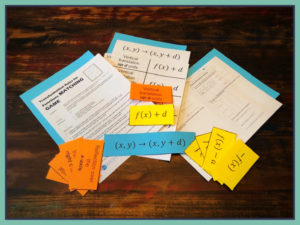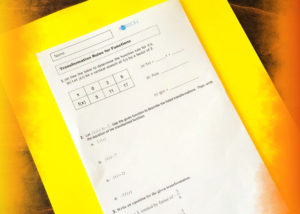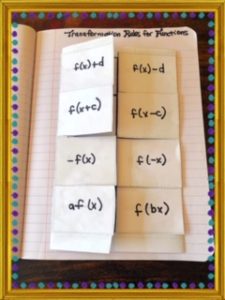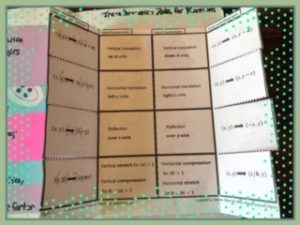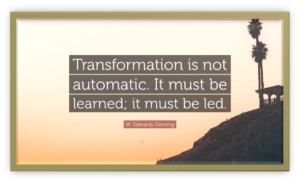
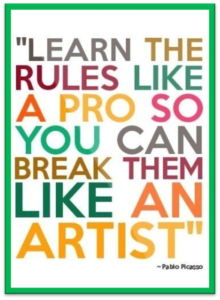
The ability to transform functions is not always automatic. It must be learned. As a bonus, if you learn the transformation rules for functions, then you can use them like a pro AND an artist.
Your unit on transformations of linear functions will become easier for your students, if you use the Rules for Transformation of Linear Functions Game. This game has students matching the function notation with the type of transformation and the change to coordinate point.
To help determine your students level of mastery of the concepts explored in the game, use the passport of state-formatted questions.
I recommend using game clickers to all triad matching games. Players use clickers to indicate a “STEAL” of a pair of cards. Laughter releases the best chemicals and will help your students learn the transformation rules while having fun!
To help anchor the transformation rules in your students’ long-term memory, use this Transformation Rules for Functions Foldable.
The inside of this “french-door” foldable is furnished for you. Having students complete the cover of the flaps will help them remember what they have included in their interactive notebooks.
Why take the time to create and play a game for transformation rules? Well, it’s scientifically proven to be more effective. In her article, The neuroscience of Joyful Education (Educational Leadership, Volume 64), Judy Willis explains.
Brain research tells us that when the fun stops, learning often stops, too. Most children can’t wait to start kindergarten and often talk passionately about what they learn and do in school.
Neuroimaging studies and measurement of brain chemical transmitters reveal that students’ comfort level can influence information transmission and storage in the brain (Thanos et al., 1999). When students are engaged and motivated and feel minimal stress, information flows freely through the affective filter in the amygdala and they achieve higher levels of cognition, make connections, and experience “aha” moments. Such learning comes not from quiet classrooms and directed lectures, but from classrooms with an atmosphere of exuberant discovery.


